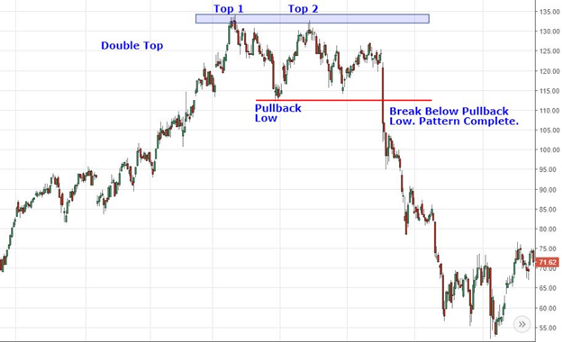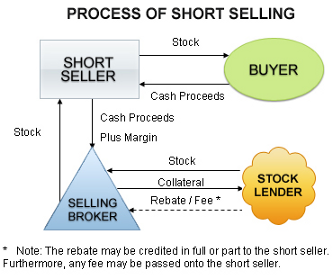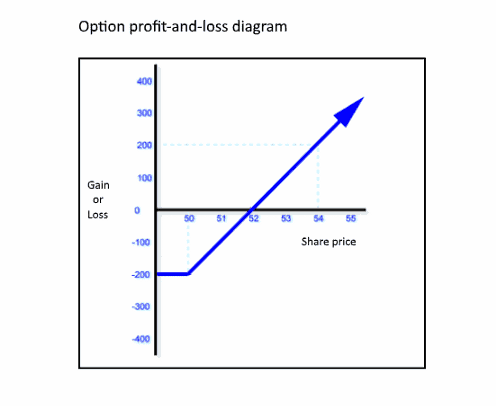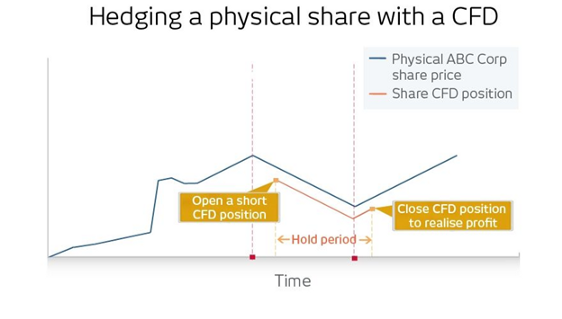Most people know how to invest in an asset when they believe it will increase in value: just buy the asset and wait for the rise in price. But they may not know there are ways to make a profit when they expect the asset will decrease in value: namely, short sell the asset. Given the extreme volatility that Bitcoin has demonstrated both recently and historically, knowing how to short Bitcoin can be a powerful tool in a trader’s arsenal.
When used correctly, shorting can also help with auxiliary trading functions, from tax management to risk management. Shorting is a relatively advanced investing strategy, so it’s crucial to understand how it works before actually deploying it.
How shorting Bitcoin works
“Going short,” or taking a short position, is a way to profit when an investment goes down in price instead of up. If you sell an investment short, you’ll make money if the investment’s price goes down; usually, the lower the price goes, the more you’ll make on the transaction. For example, if one were to short Bitcoin at $10,000 USD and it dropped to $6,000 USD, one would make $4,000 USD in profit. On the other hand, if one were to short Bitcoin at $10,000 USD and it climbed to $12,000 USD, one would lose $2,000 USD.
Shorting tends to be riskier than “going long,” which means buying an investment with the hope that it will increase in price. That’s because when you short an investment, your potential loss is theoretically infinite while your potential gain is finite — the exact opposite of going long.
Since the price of an asset can’t go below zero, there’s a limit to how much profit one could make by going short, even in a best-case scenario. On the other hand, if one were to guess wrong and the asset one shorted went up in price, one would lose money. And since an asset could theoretically go up in price infinitely, one could (also theoretically) lose an infinite amount of money. That’s an extreme example, but it does illustrate the risks of shorting an investment.
7 Ways to Short Bitcoin
There are a number of ways to get a short exposure to a particular asset, and the suitability of each one varies depending on one’s resources, risk tolerance, and overall investing strategy. Here are some of the avenues one could use to go short on Bitcoin.
1. Sell BTC holdings
The easiest way to profit from a Bitcoin bubble is to sell some or all of one’s holdings when one thinks the market has reached a peak, and then wait for the price to drop before buying more. Technically, this isn’t shorting — rather, it’s closing out a long position — but it’s an excellent option if one expects the price of Bitcoin to drop in the near future.
Technical analysts use charts to help decide when they should go long or short on an investment. For example, a technical analyst might look for what’s called a “double top” as an indication of an upcoming drop in price. The below chart shows what that particular pattern looks like.

Selling Bitcoin when it’s worth more than the original purchase will realize the gains on those coins and lock in a profit. For example, imagine that someone originally bought Bitcoin at $6,000 USD per coin, but now it’s at $10,000 USD per coin. If they’re worried that BTC is headed for a crash, they could sell some of their holdings today and realize that $4,000 USD/BTC gain immediately. The worst thing that can happen if that person guessed wrong is that they lost out on some of the profit they might’ve made by waiting longer to sell their assets.
Returning to the previous example, if that person sold a bitcoin at $10,000 USD, and the market then climbed to $12,000 USD, they would still make $4,000 USD in profit, even though they missed out on the chance to grab an additional couple of thousand dollars.
2. Short-sell BTC
This approach entails borrowing a set amount of an asset and then selling it immediately. If the price of the asset then drops, one can then buy it and return the same number of the asset one originally borrowed to the broker who lent them in the first place.
The graphic below shows how this process works with traditional investments like stocks; BTC short-selling works much the same way.

For example, say Bitcoin is at $10,000 USD, and a trader thinks it’s ready to take a tumble. They could borrow one BTC and sell it for $10,000 USD. If the price of BTC drops to $6,000 USD, they could then buy one Bitcoin, give it to the person who lent the original BTC, and pocket the $4,000 USD difference.
3. Short the Bitcoin Investment Trust
The Bitcoin Investment Trust (NASDAQ: GBTC) is a publicly-traded investment that tracks BTC’s market price, (theoretically) going up or down in price as BTC does. The fund was established in 2013, but it didn’t garner much attention until 2017, when Bitcoin suddenly became popular with the mainstream population and people started looking for more ways to buy in.
The Bitcoin Investment Trust lets people invest in Bitcoin (going either short or long) without needing to buy the actual cryptocurrency. Just log onto your chosen brokerage’s website, and follow the prompts to short the fund (or pick up the phone and call your broker, if you’re old-fashioned that way).

While the Bitcoin Investment Trust managers do their best to track BTC’s performance as closely as possible, it may underperform or overperform as BTC rises and falls, especially during periods of extreme volatility. Periods when investors are busily buying or selling shares of the fund will likely also cause discrepancies because this tends to throw off how the fund performs compared with BTC itself.
The fund’s management fees will also eat into any profits you make. At present, the Bitcoin Investment Trust charges a 2% annual management fee. That’s relatively high: according to a recent Morningstar study, the average annual fund fee in 2017 was 0.52%.
4. Options market
An option contract lets you purchase the right to buy or sell an underlying asset at a specified price by a specified future date. Buying “call” options give traders the right to purchase that asset later, while “put” options give traders the right to sell that asset. Buying a put option on BTC or selling a call option on it can allow traders to bet that its price will decrease in the future.
If you buy an option contract, you pay a premium to the party selling the contract. The premium will vary based on the size of the contract, the expiration date, the seller’s belief about whether the asset in question is going to rise or fall in price, and so on. One of the nice things about options contracts is that if you purchase one, you’re not required to use it: you can simply let it expire if it turns out you guessed wrong about the market.

For example, someone might buy a put option to sell BTC at a strike price of $10,000 USD with a one-month expiration date (meaning they have the option to sell Bitcoin at the strike price within one month of purchasing the contract). If BTC drops to $6,000 USD the week after they buy the contract, they can buy BTC for $6,000 USD and then exercise the option, selling those bitcoins for $10,000 USD apiece to the person who sold the option. The profit in this case would be $4,000 USD per BTC, minus the premium paid for the contract.
On the other hand, if a trader holds a put option with a strike price of $10,000 USD and BTC stays above that amount for the full month, they can simply let the contract expire without exercising it. In that case, they’d be out the money for the contract premium, but at least they wouldn’t be forced to exercise the contract at a loss.
5. Sell a Bitcoin futures contract
Futures contracts are a legal agreement to buy or sell an underlying asset for a specific amount on a specific date. In a Bitcoin futures contract, the buyer commits to buying a certain amount of BTC at a certain price on a predetermined date, while the seller commits to selling that amount of BTC to the buyer at that price on that date.
These contracts were created to protect buyers and sellers from price fluctuations on commodities like wheat, oil, and precious metals. Today, traders can get futures contracts on a wide range of different assets — including BTC.
If you’re looking to short Bitcoin, you’ll want to be the seller in a futures contract. For example, if the seller in a Bitcoin futures contract commits to selling 10 BTC at $10,000 USD apiece three months from today, and the price of BTC has dropped to $6,000 USD before the future contract expires, the seller will make a profit of $4,000 USD per BTC, or $40,000 USD total.
Bitcoin futures are available on the Chicago Board Options Exchange (CBOE) and Chicago Mercantile Exchange (CME) and are offered by many major brokers.
6. Contract for Difference
A contract for difference (CFD) is a type of futures contract, but instead of trading actual bitcoins when you settle the contract, you just trade fiat currency. The buyer and the seller of the contract agree to settle any change in the price of BTC in fiat currency on the date the contract ends. CFDs are traded OTC (over-the-counter) rather than on a regulated exchange.
For example, an investor might sell a CFD on BTC for a week in the future for $10,000 USD. If the price of BTC were $6,000 USD on the date the contract expired, the buyer would pay them $4,000 USD per BTC specified in the contract. On the other hand, if the price of BTC went up to $12,000 USD, they’d owe the buyer $2,000 USD per BTC specified in the contract.
Some CFDs will let parties exit the contract early if they choose. For example, if a trader were a few days into a short CFD contract and the price of BTC were soaring, the trader might decide to cut their losses and buy out the contract at the current price of BTC rather than waiting out the full week.
CFDs can be used to hedge one’s losses (i.e. protecting oneself if one already owns BTC and thinks it might be headed for a bear market). A trader who both own BTC and sells a CFD will make some money no matter what happens to the market: if Bitcoin goes up, BTC will grow in value, but if Bitcoin goes down, the CFD will turn a profit.

7. Prediction markets
Prediction markets let users predict and bet on the outcome of certain events.

Most prediction markets let users create or pick an existing prediction that they want to bet on — such as one about Bitcoin’s performance — and buy “shares” on that event. If you think that the prediction is correct, you buy shares; if you think it’s wrong, you sell shares. To short Bitcoin, you’ll want to find a prediction that the price of BTC will drop and go long on it, or find one saying that the price of BTC will rise and go short on it.
Advanced ways to make shorting Bitcoin part of a trading strategy
Shorting Bitcoin can grant a few special advantages above and beyond the obvious.
Direction
Shorting lets traders keep trading whether you believe the market is headed up or down. If a trader has reason to believe prices will decrease instead of increasing, the trader could potentially increase their profits by shorting Bitcoin (as opposed to a hodler approach).
Diversification
Holding both long and short positions on different (but similar) assets diversifies a portfolio, which reduces overall risk. For example, different cryptocurrencies often move roughly in parallel. Going long on Bitcoin and short on Ethereum could potentially protect one’s crypto portfolio from some of the market forces that affect the entire crypto ecosystem.
Tax management
Taking short positions has the potential to reduce tax bills by helping to manage capital gains. During bull markets, finding capital losses to balance out capital gains can be a challenge. Shorting can serve as a way of cancelling out taxable gains in such a market, which is particularly useful in the case of short-term capital gains (these are taxed at a higher rate than long-term capital gains).
Tax planning is a complex subject. Consult an experienced and licensed tax adviser before proceeding with any tax-related strategy.
Consider shorting as part of your trading arsenal
Active crypto traders can greatly benefit from understanding the full suite of strategies for shorting. Be advised that we are not recommending that you short Bitcoin, nor that you don’t short Bitcoin: with any trading and tax advice, it is always best to seek advice from licensed professionals. Shorting, when managed correctly, can reduce investment risks. Especially when engaging with a market as complex as crypto, it’s critical to have a holistic view of trading opportunities and how to capture them.
The above references an opinion and is for informational purposes only. It is not intended as and does not constitute investment advice, and is not an offer to buy or sell or a solicitation of an offer to buy or sell any cryptocurrency, security, product, service or investment. Seek a duly licensed professional for investment advice. The information provided here or in any communication containing a link to this site is not intended for distribution to, or use by, any person or entity in any jurisdiction or country where such distribution or use would be contrary to law or regulation or which would subject SFOX, Inc. or its affiliates to any registration requirement within such jurisdiction or country. Neither the information, nor any opinion contained in this site constitutes a solicitation or offer by SFOX, Inc. or its affiliates to buy or sell any cryptocurrencies, securities, futures, options or other financial instruments or provide any investment advice or service.



